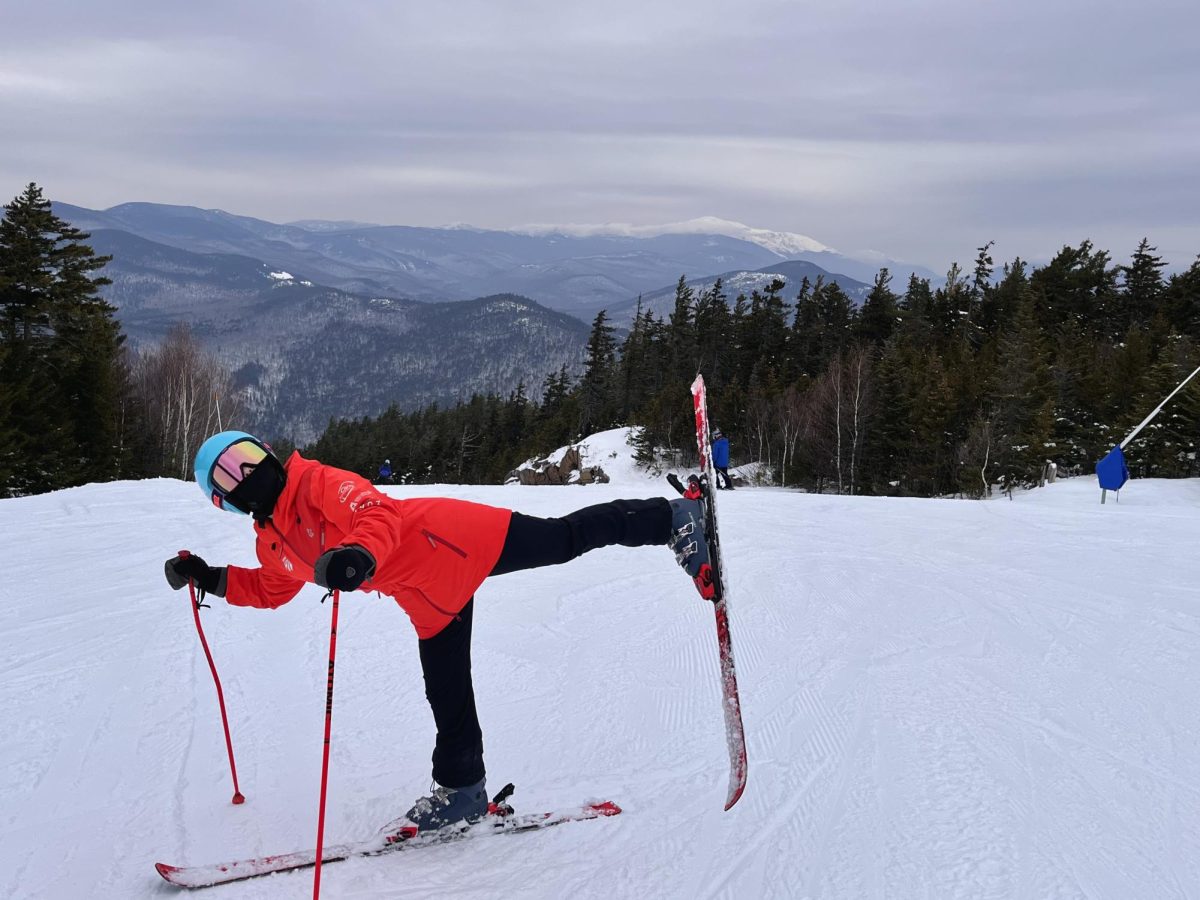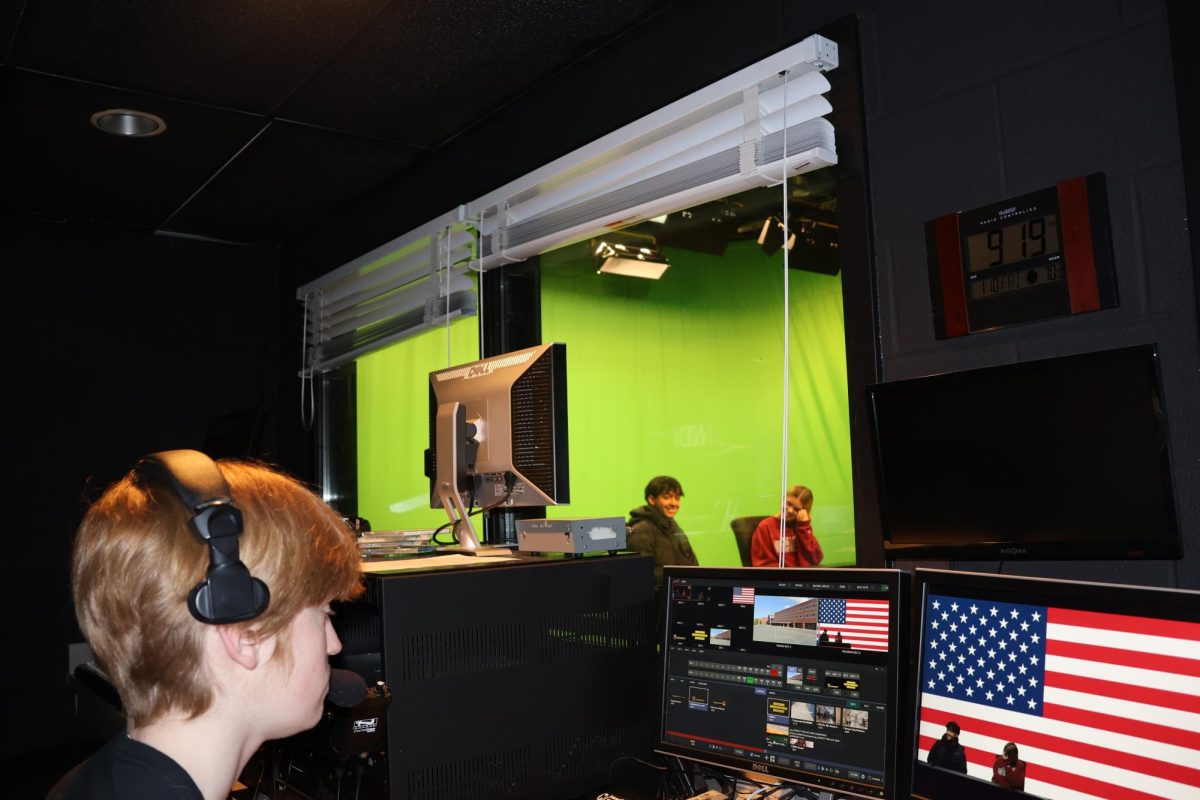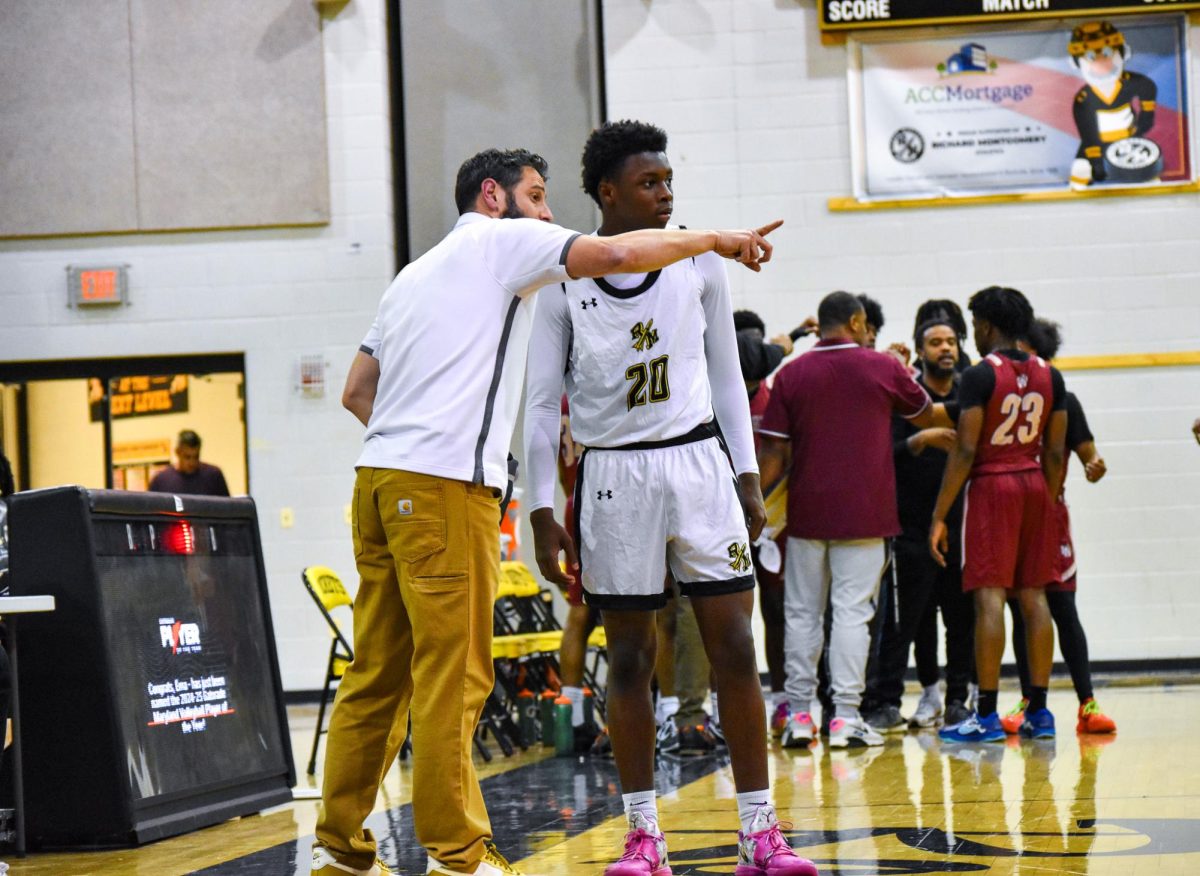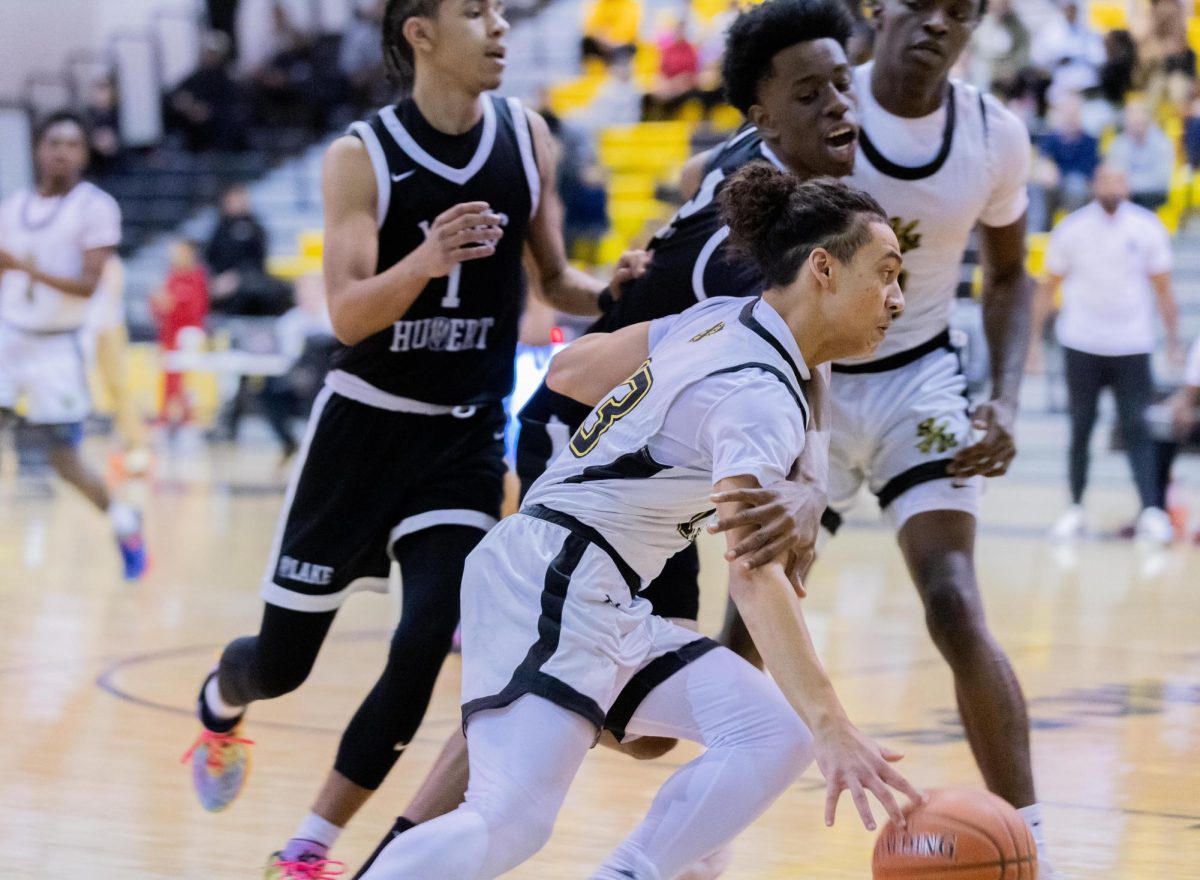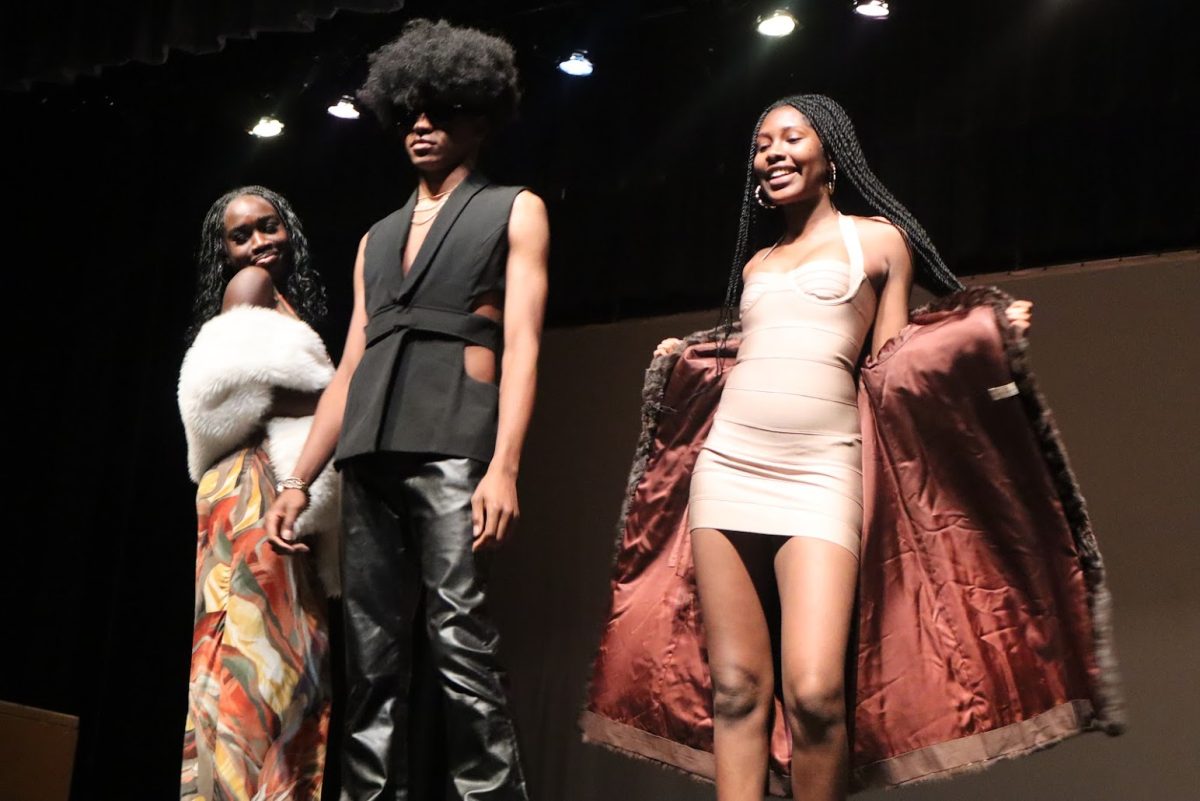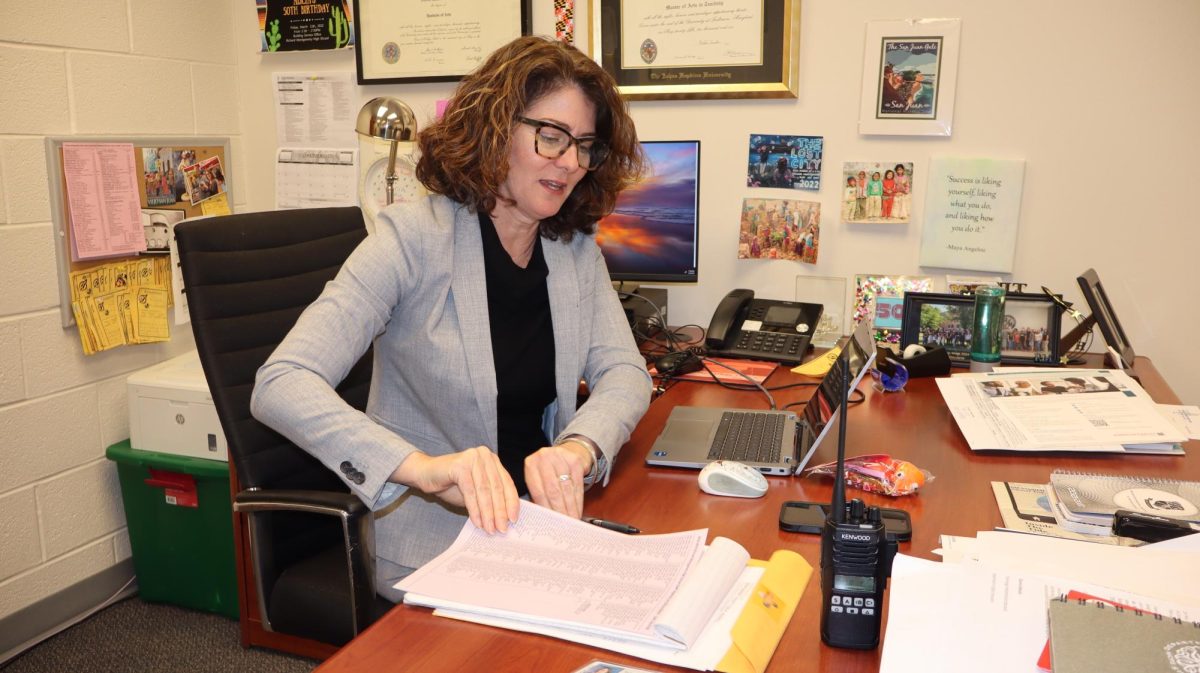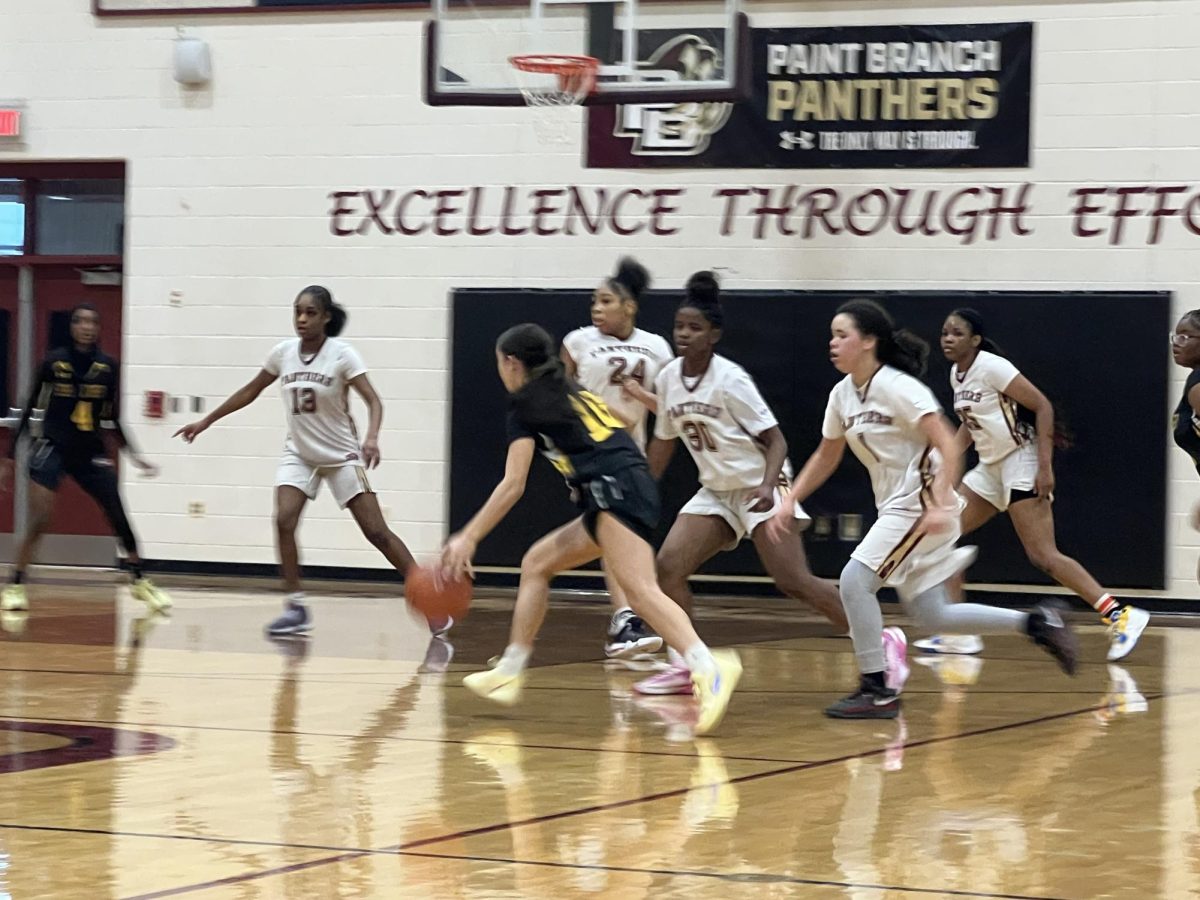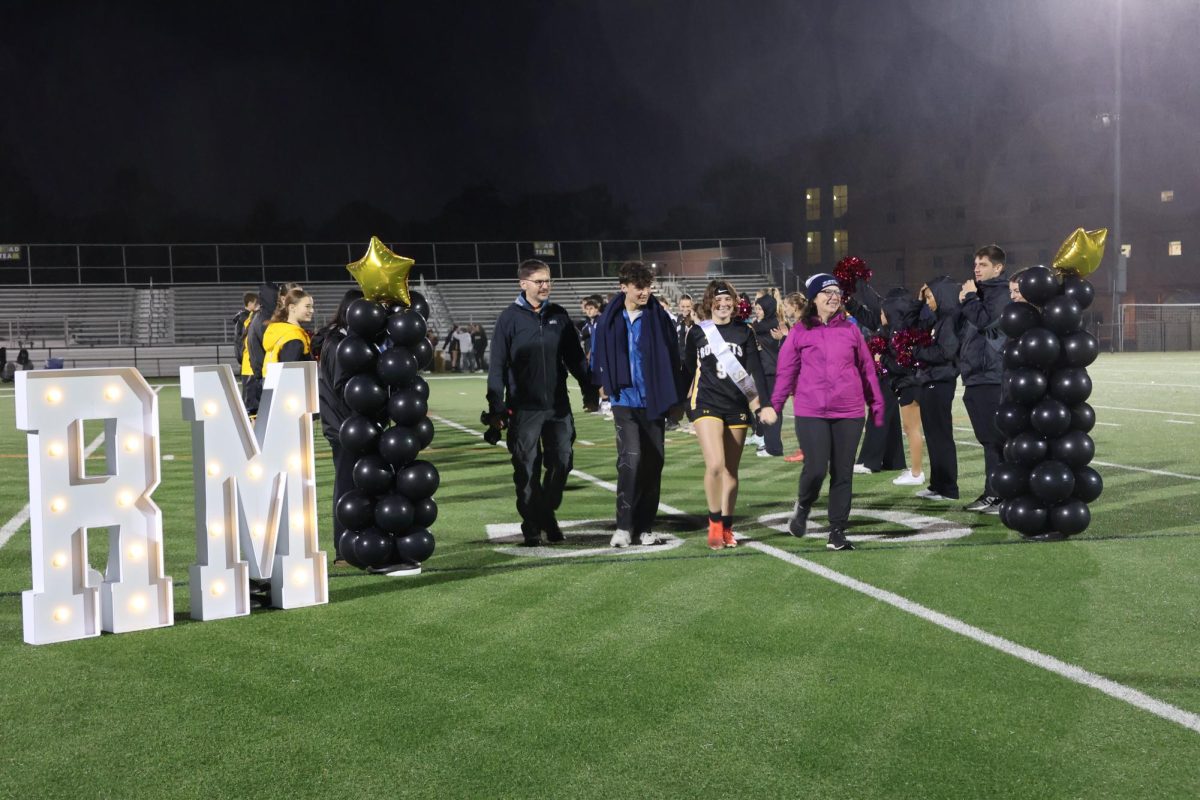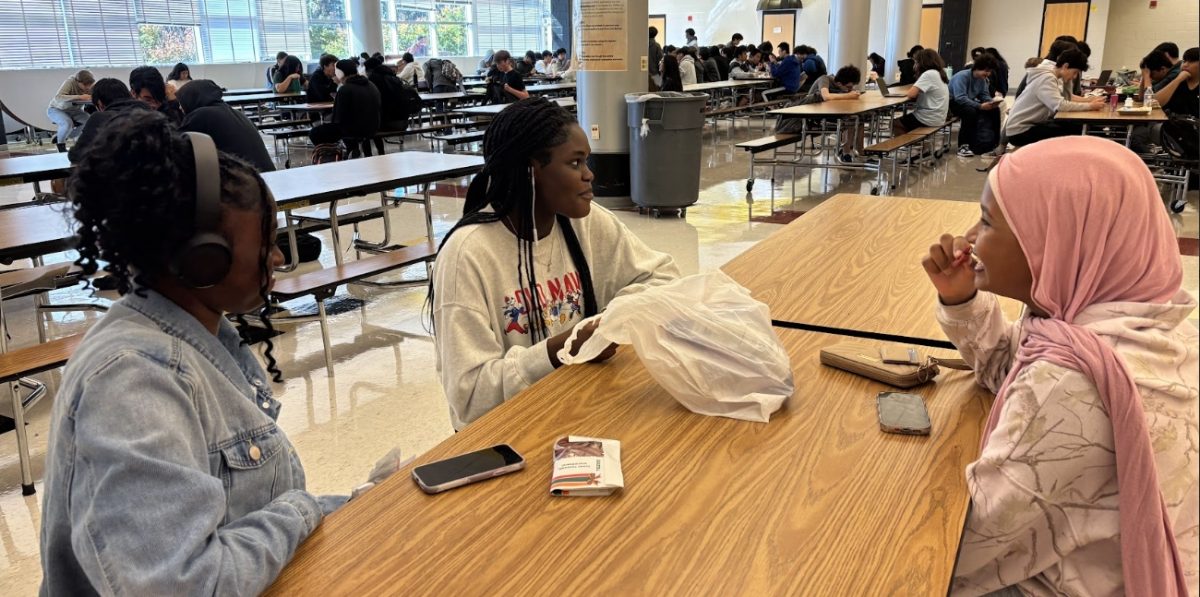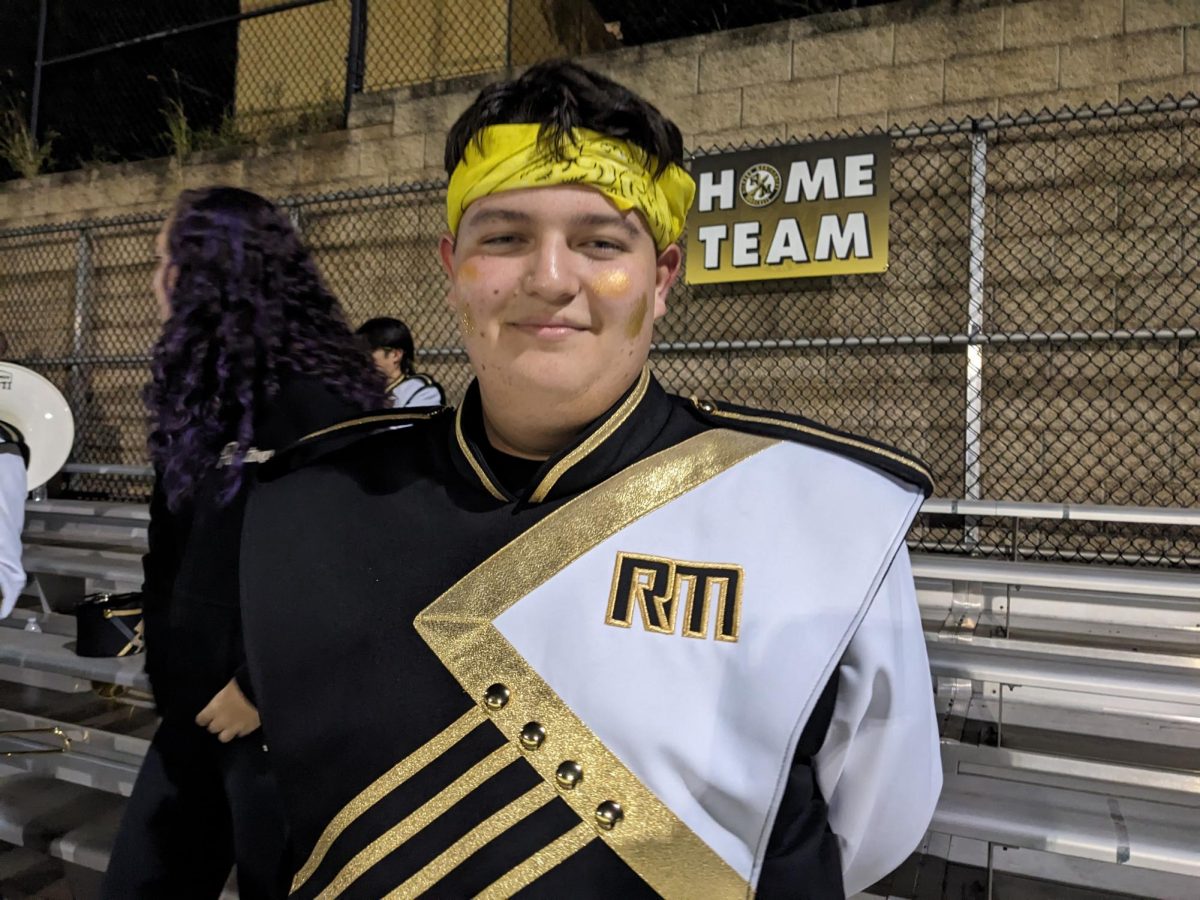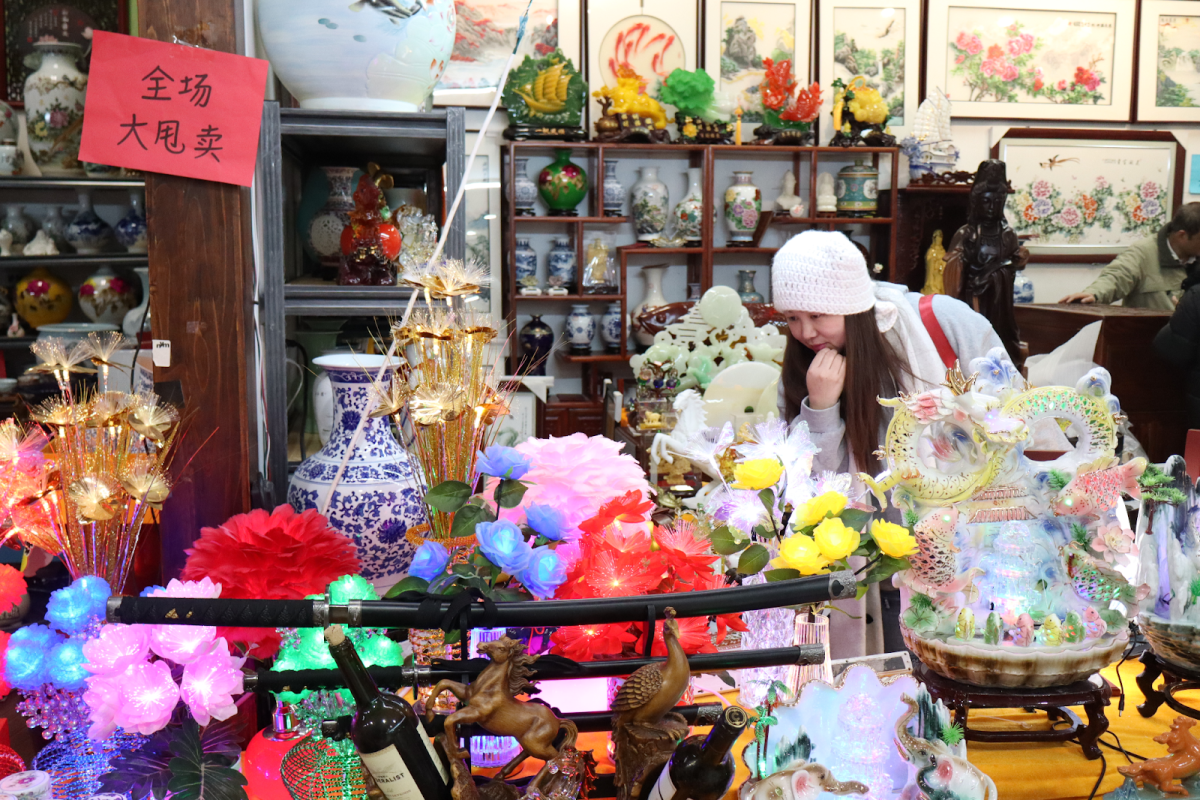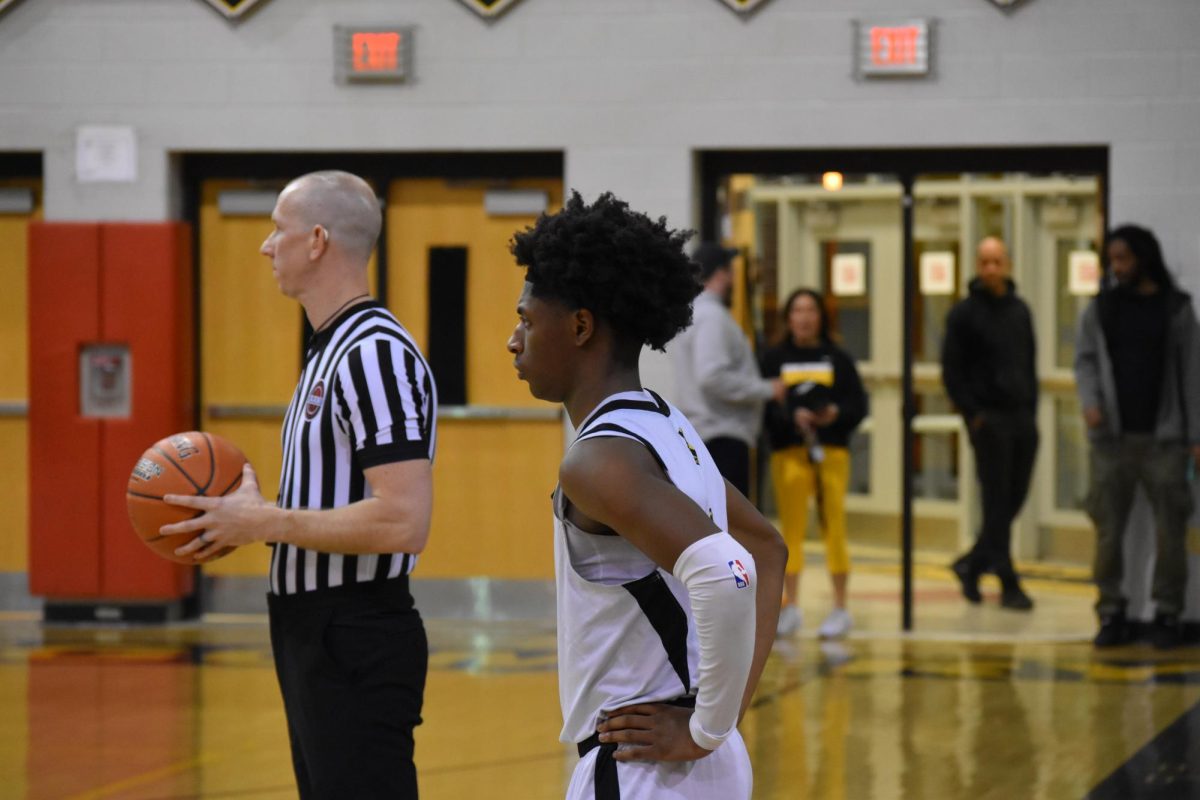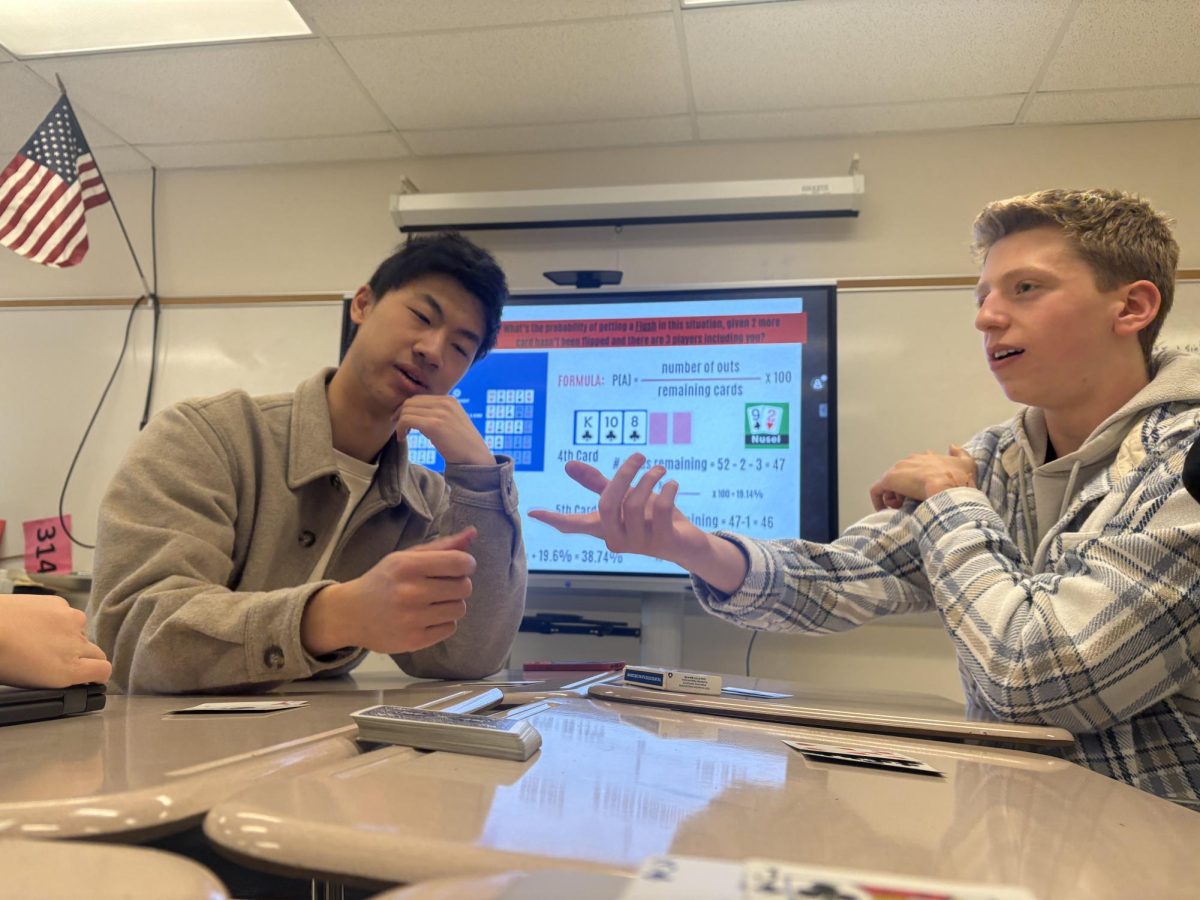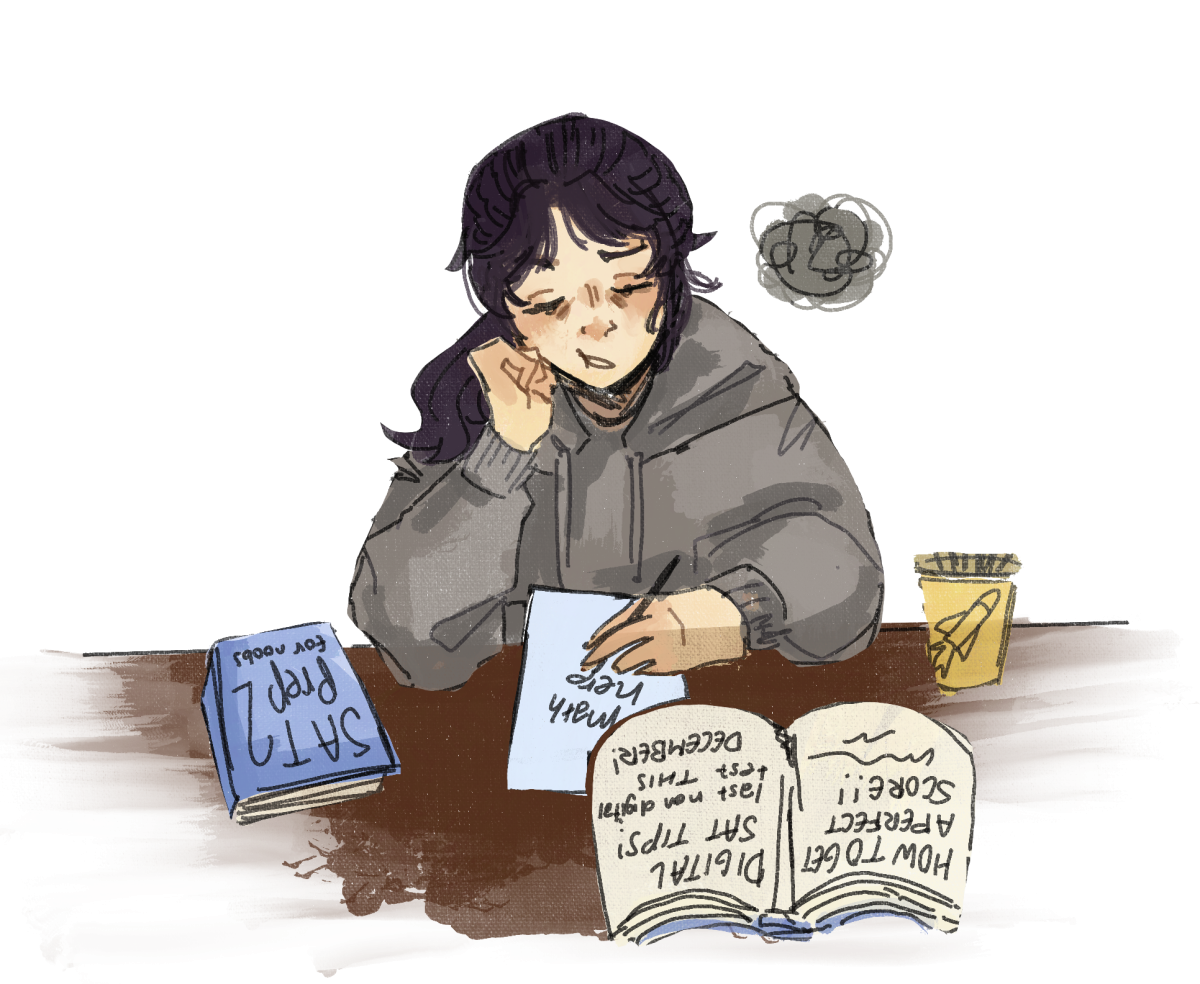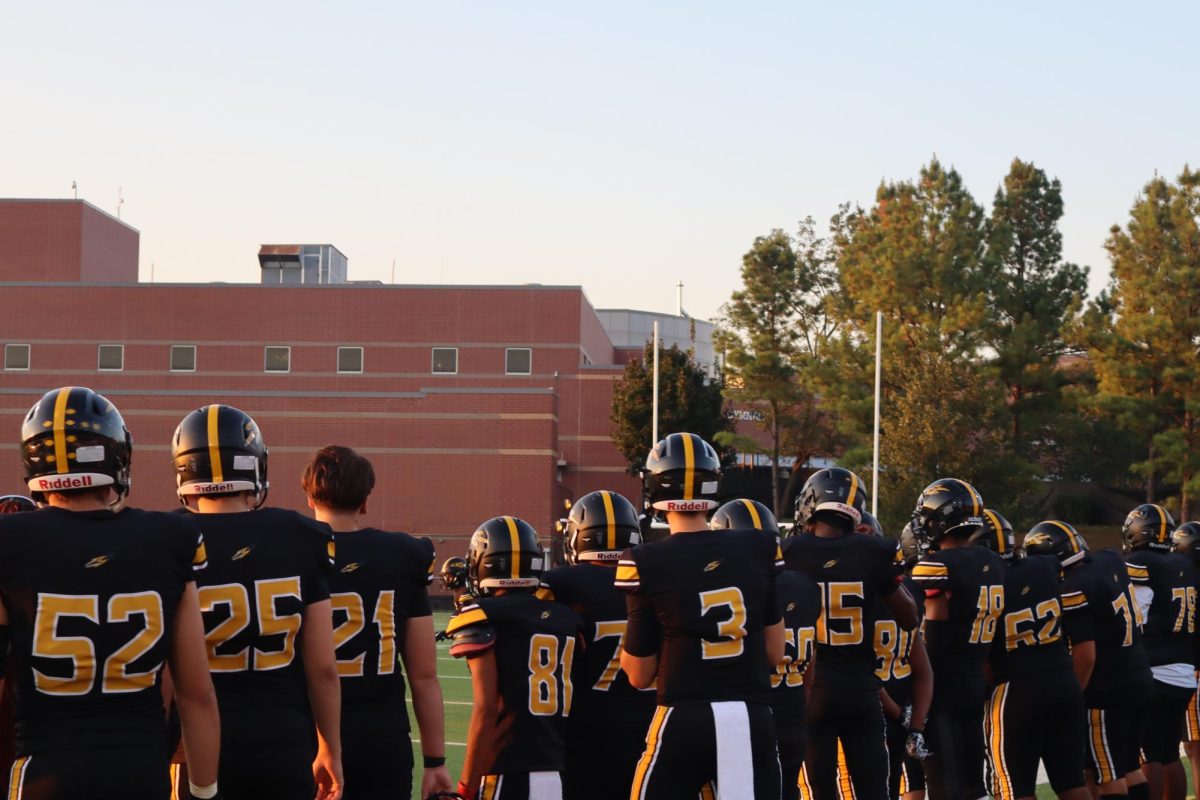Photo Essay: Hidden winter sports
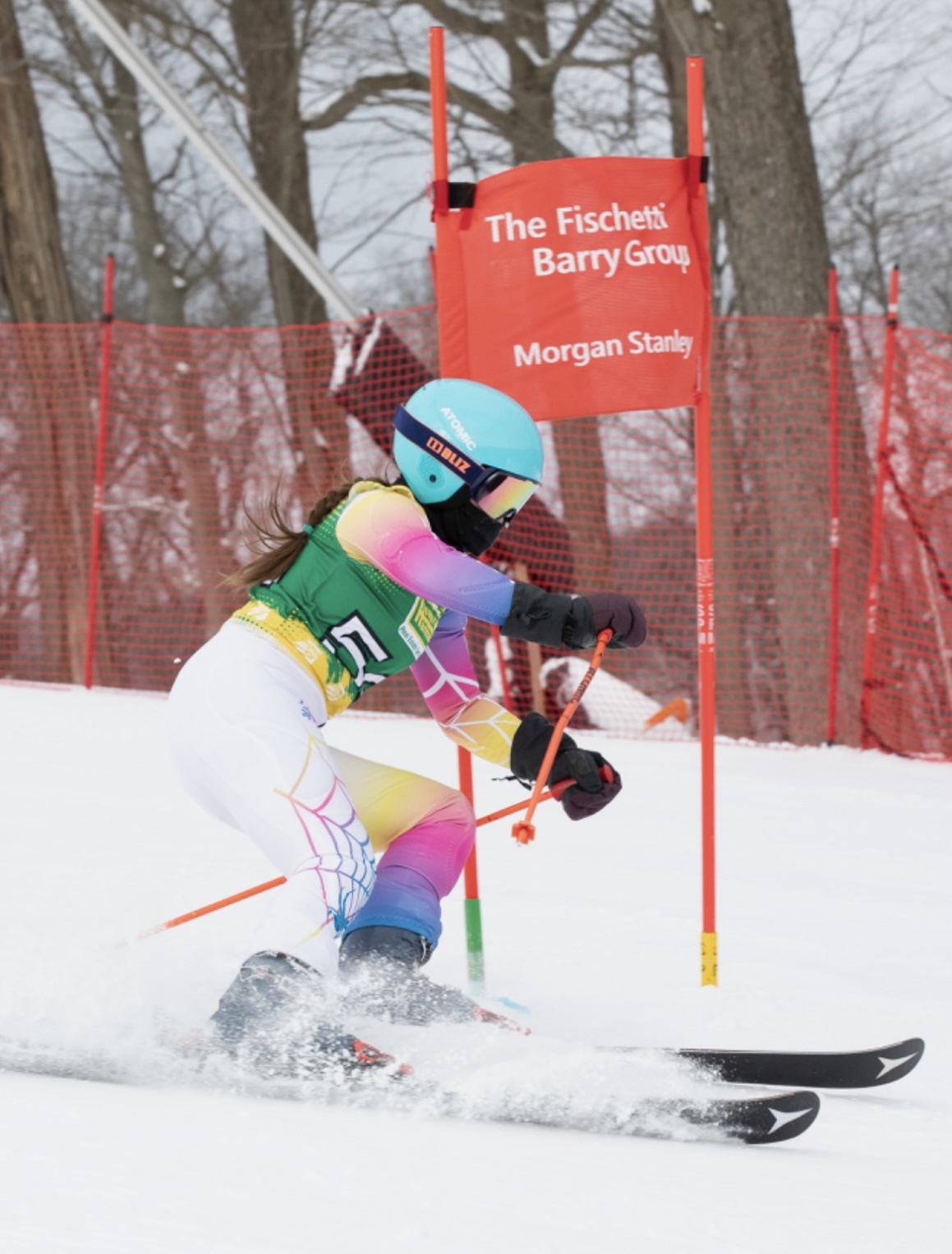
How many people do you know at RM who play a winter sport? RM has great hockey, but what about figure skating, skiing, and snowboarding? How many people do you know who actually participate in these winter sports? It turns out they are all around you–your peers, classmates and friends at RM! Despite athletes’ long hours of practice, incredible endurance, strength, and flexibility required, and their incredible achievements and accolades, individual winter sports like these often go unnoticed on the RM campus, given that they aren’t school-sponsored athletic team sports–keeping these athletes “hidden” amongst us. Let’s meet some of these talented RM athletes and bring them into the spotlight!
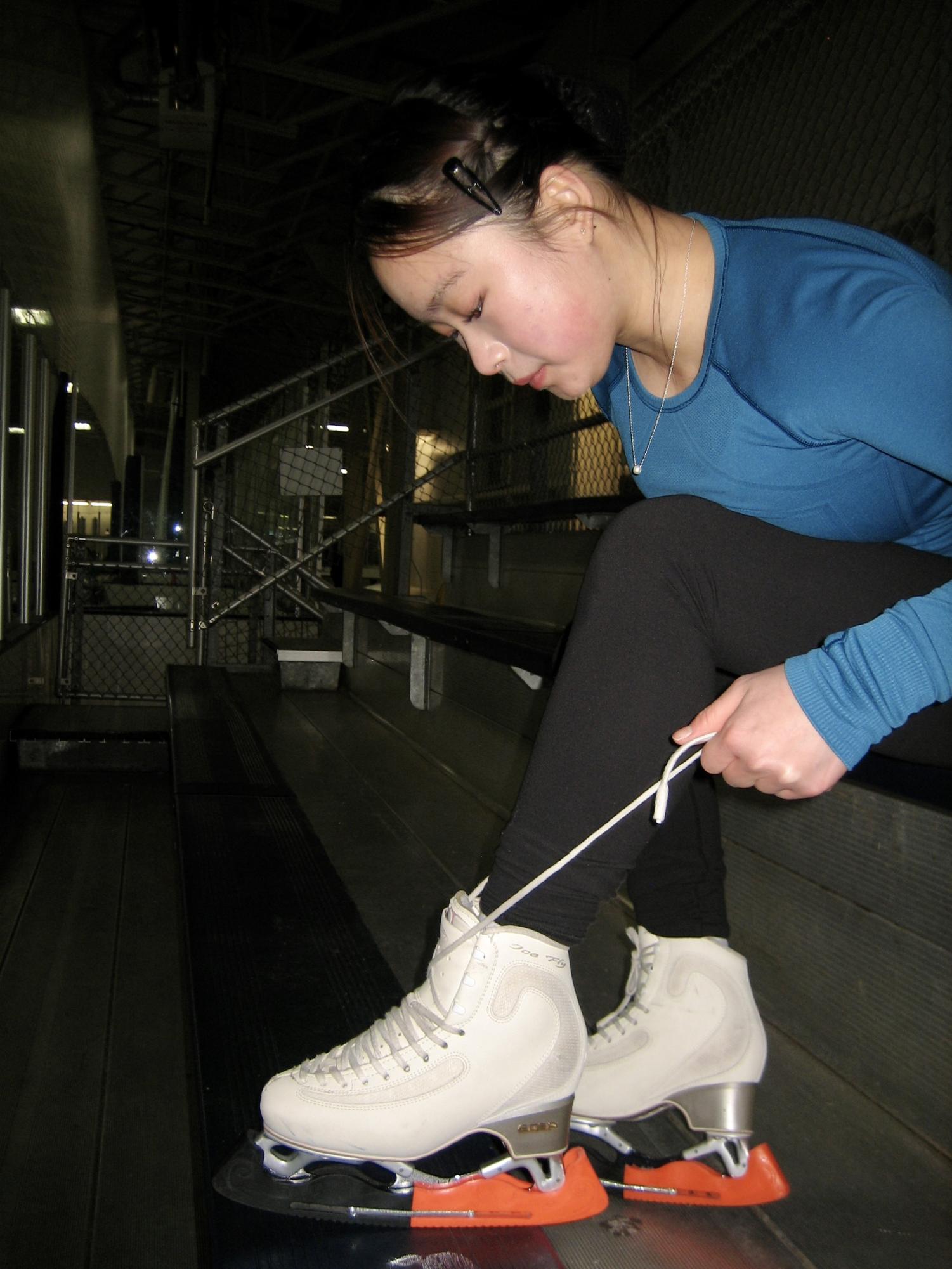
Sophomore Yi-Chen Kong, a competitive figure skater, laces up her skates before hitting the ice. “Before I skate, regardless if it’s competition or practice, I always do an off-ice warm up. Warm[ing] up while listening to music helps me focus, and gets my muscles moving. If my skates aren’t tied right, it sets my jumps off a bit,” Kong said.
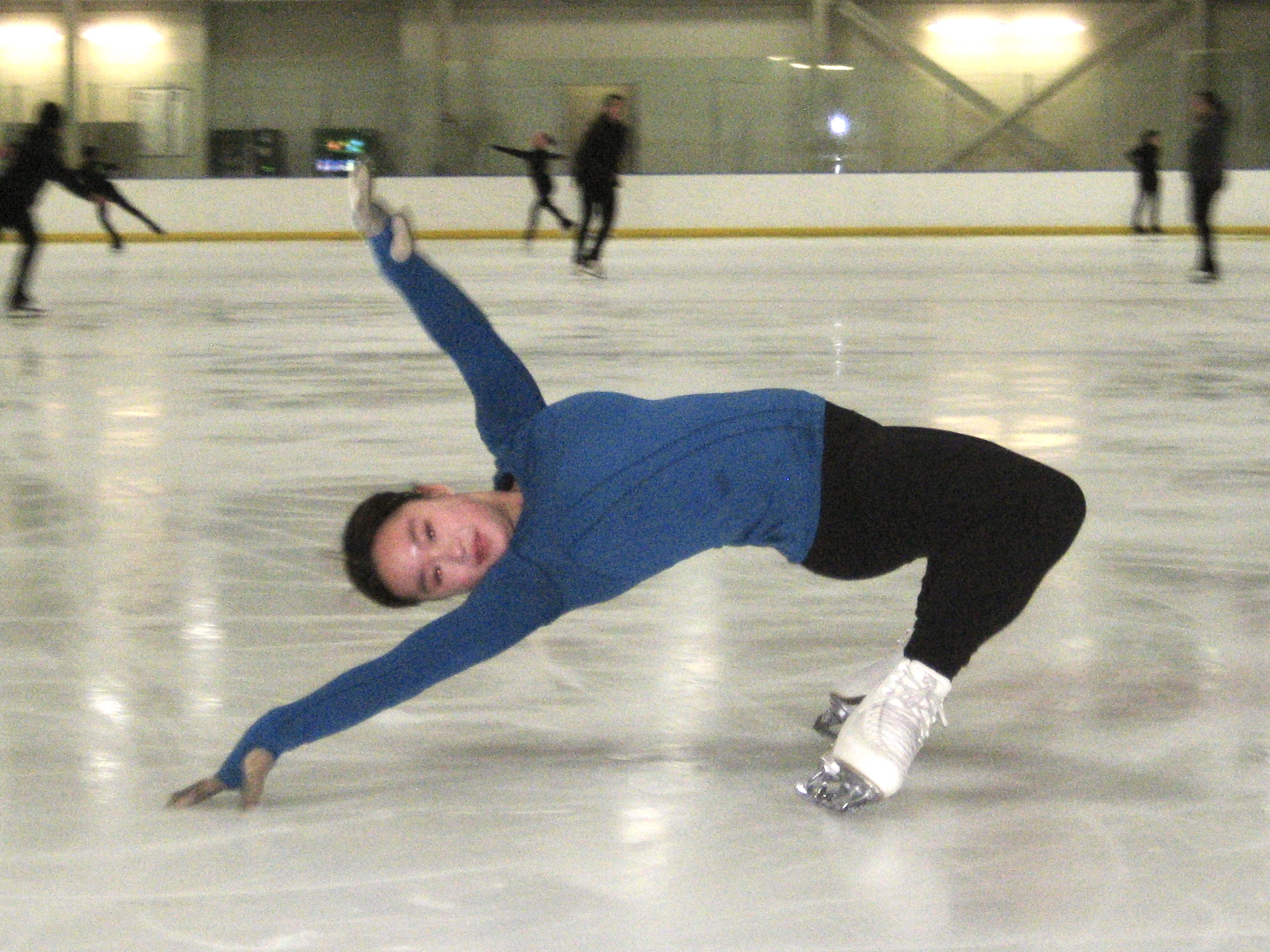
Kong shows off some of her favorite moves, skating out onto the ice and performing a skill called cantilever. “This move is one that took me three months to learn. It’s mostly difficult because of the leg strength and balance. Although the cantilever is considered an artistic skill, and not a jump or spin, the trick always looks super cool in my performances,” Kong said.
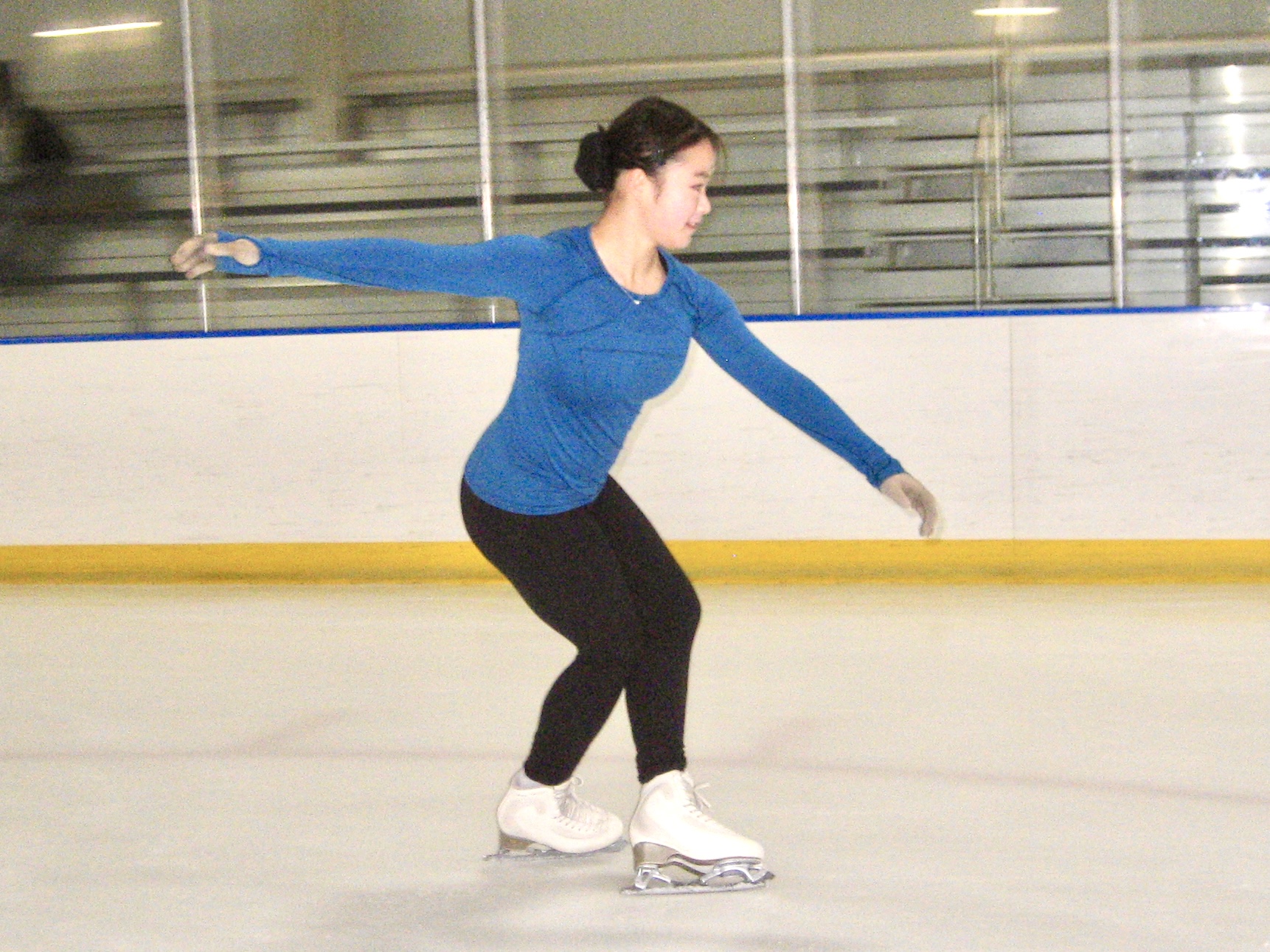
Kong prepares for a skating jump called a loop. She is able to do a double loop, which is two rotations in the air, as well as a triple loop, which is three full rotations! “I worked on the triple loop jump for one year before I was successful. In that one year, I worked tirelessly and I fell countless times,” Kong said. She also noted that skate maintenance is a huge factor in her performance when it comes to jumps. “With a cost of around $1800 a pair, I take great care of my skates. Blade maintenance includes sharpening them every month. A pair of skates usually lasts me a year,” Kong said.
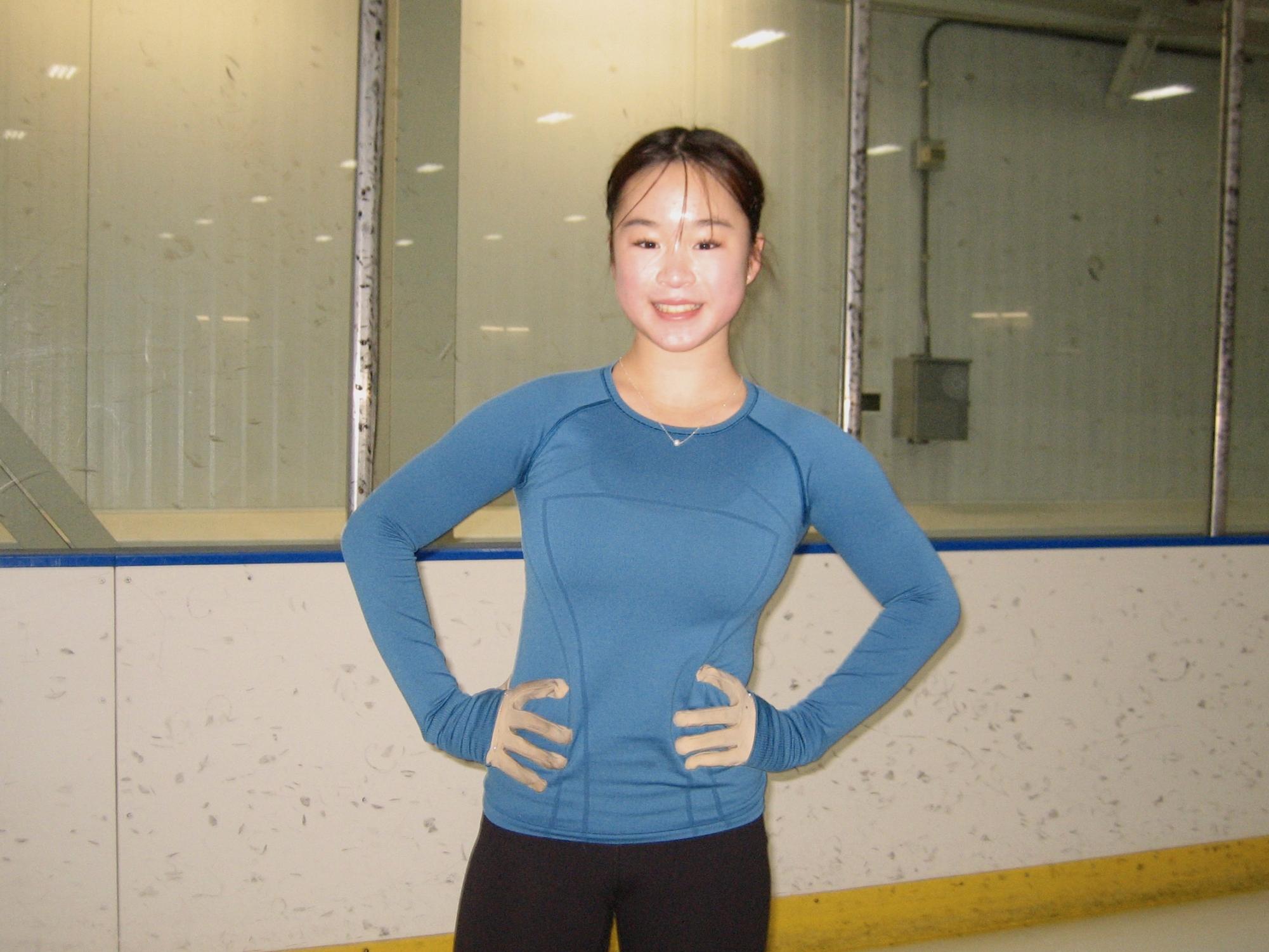
Kong poses at her local rink, Cabin John Ice Rink. “My ultimate goal for skating is to make the 2030 Winter Olympic Team,” she said. To achieve this goal, it requires a large investment of her time, so she wishes the sport was more widely recognized. “I train 1.5 hours before school and 2.5 after. As much as this schedule is exhausting, it’s much more rewarding to see my progress. After 7 years of skating, I look back and I feel proud of how much I’ve achieved; while remaining optimistic about the future and what it holds for my career,” Kong said.
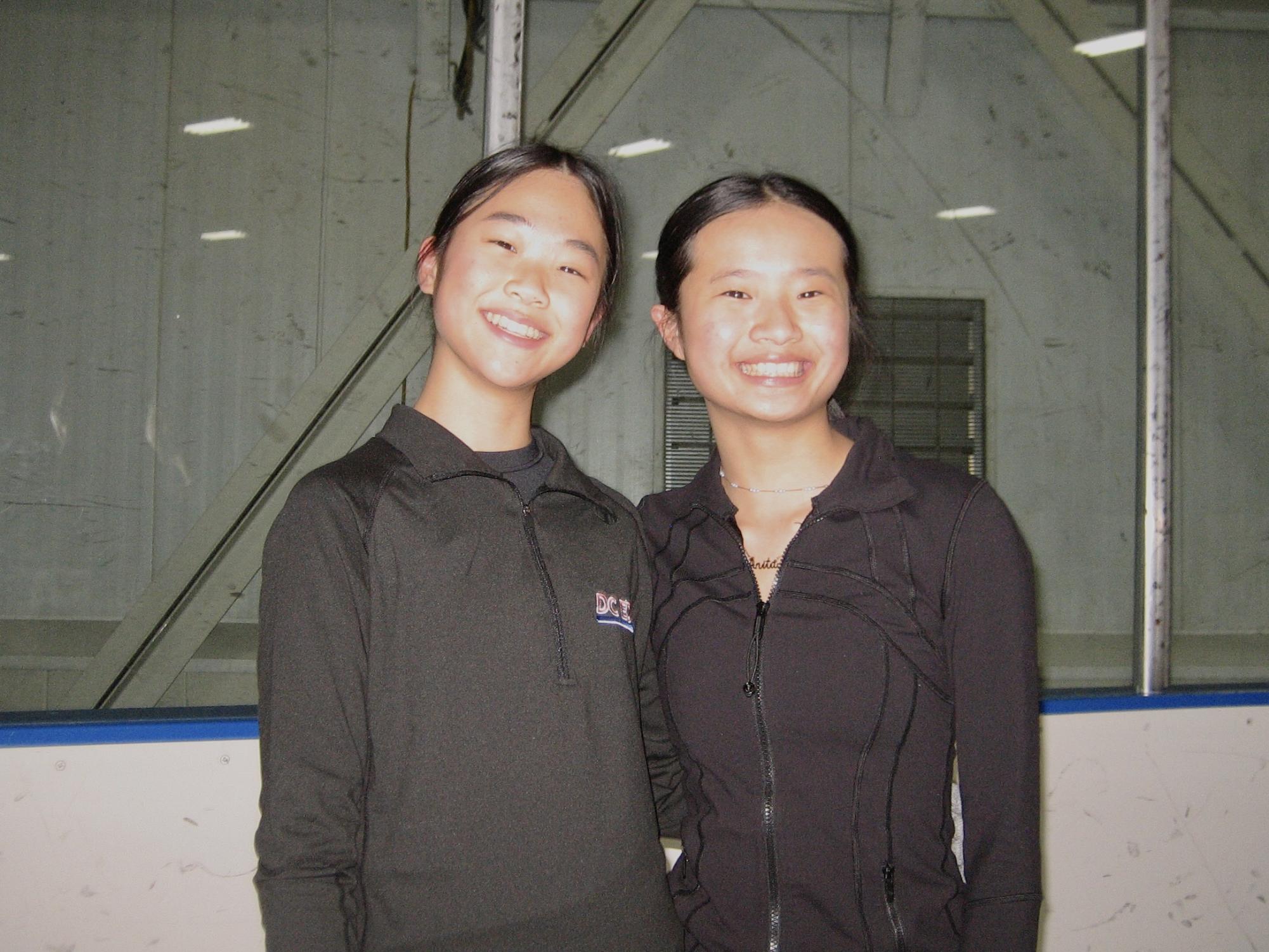
Freshman Silvia Choi (left) and sophomore Anita Wei (right), smile for the camera. Both of these RM students are figure skaters, however, they are a part of a synchronized skating team called “DC Edge”. In synchronized skating, individual skaters work together to execute complex patterns and maneuvers on the ice.
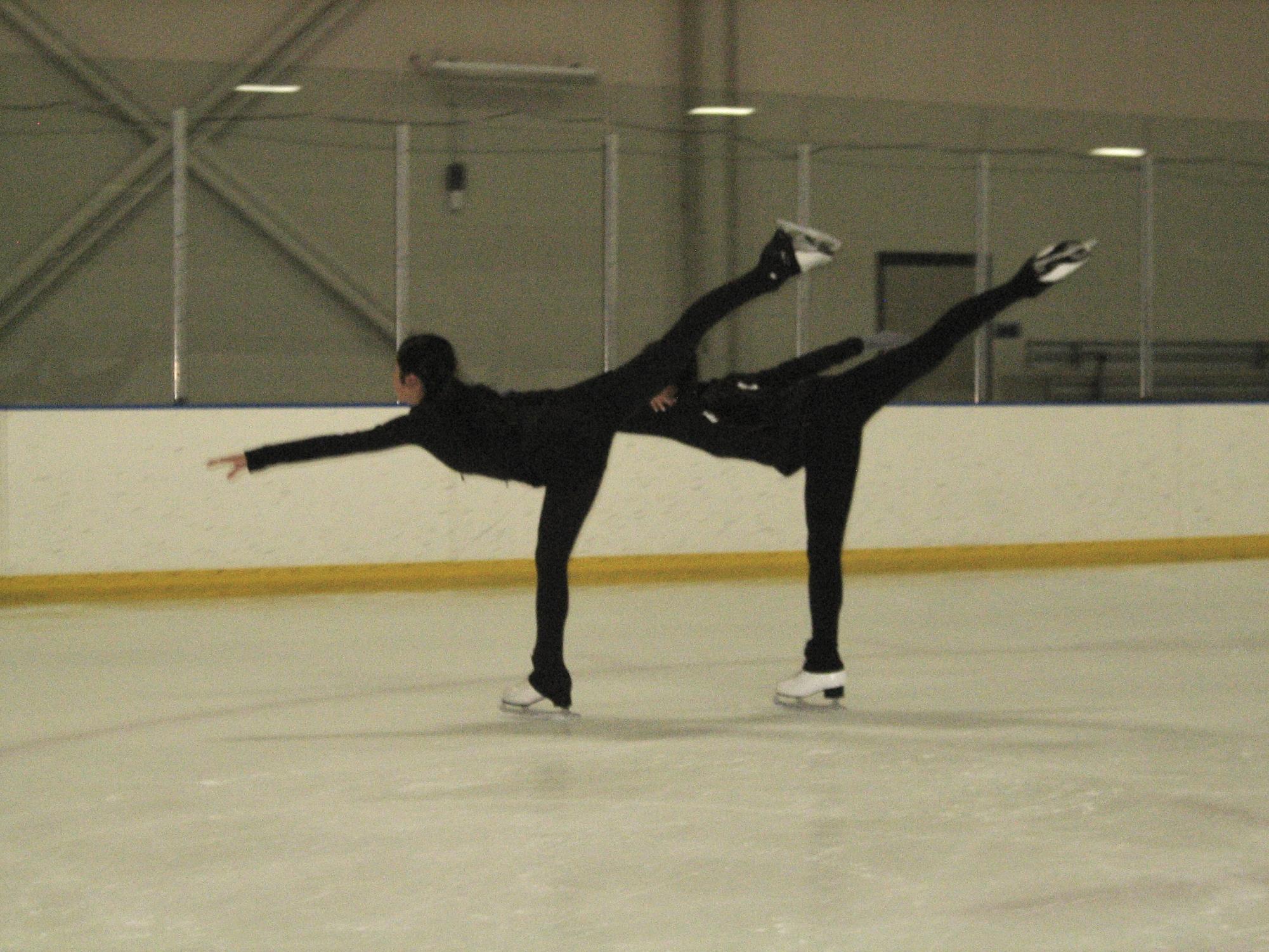
Wei (left) and Choi (right) complete a Duck Under Spiral together. In this move, two skaters execute a spiral and then one ducks under the other. Wei notes that for her, the hardest part about this move is the the spatial awareness needed. “You need be aware of where others are in relation to yourself so you can reconnect afterwards. It can also be more difficult with people you haven’t skated with before because the way they skate is usually unfamiliar,” Wei said.
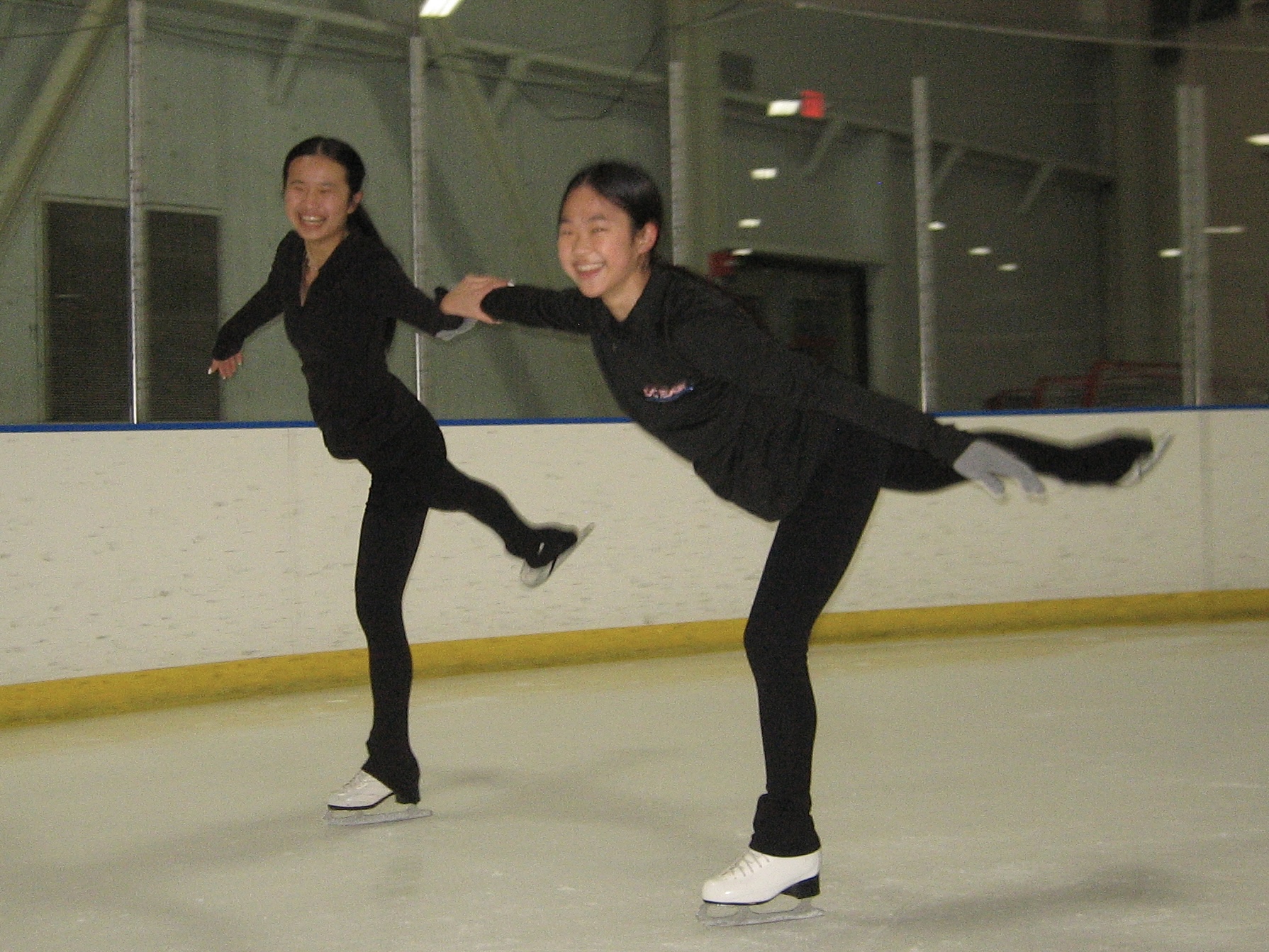
Wei and Choi smile after completing their duck under spiral. “My favorite part is the community aspect. By the end of the season, you’re able to make so many close friends, the support system is definitely the best part,” Wei said. Synchronized skating is not something many people have heard of, but it’s one of only a few team aspects of figure skating. Creating a community in mostly individual sports such as this one could make more people willing to learn and join the sport, while also making it more well known and respected.
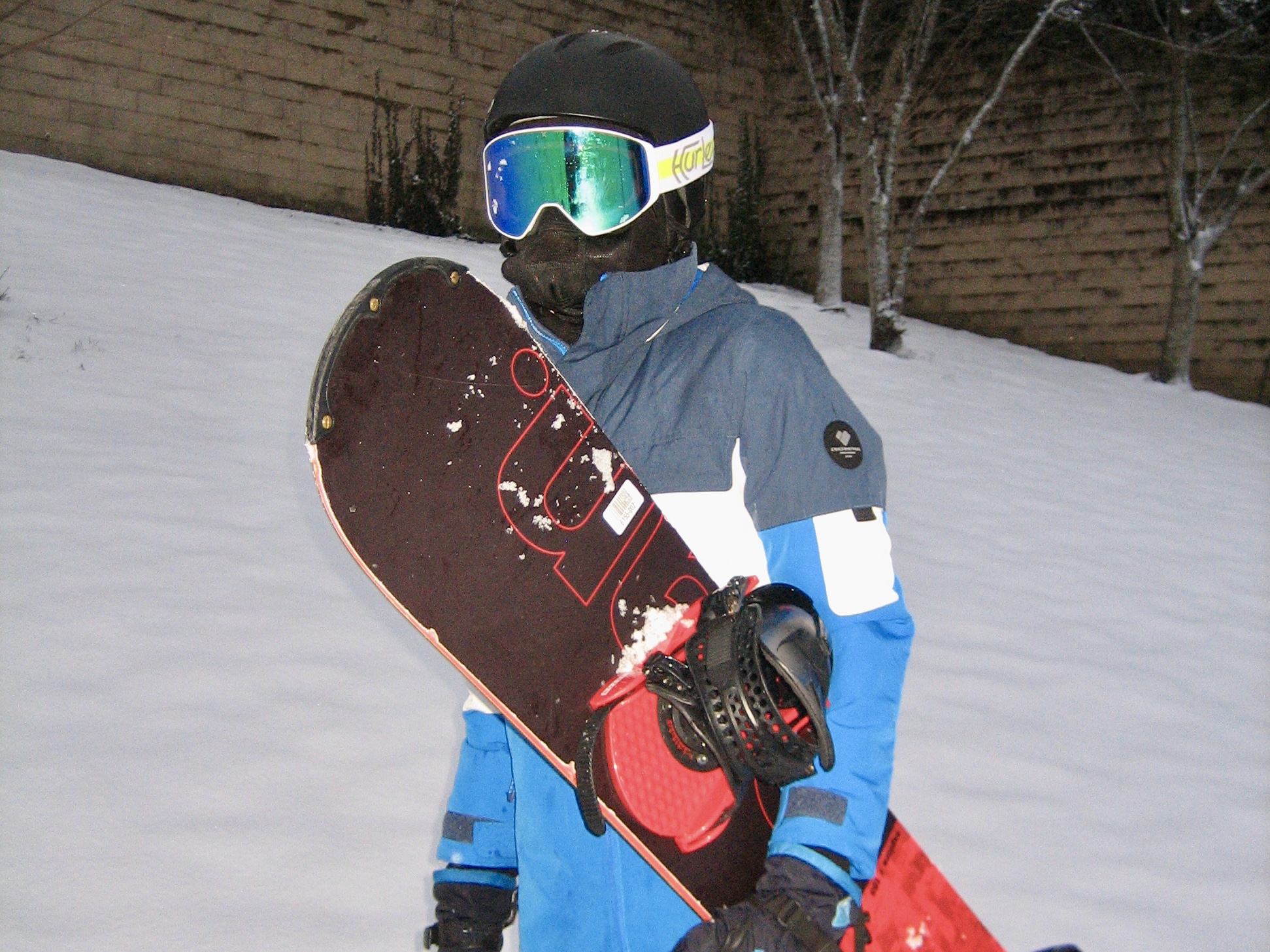
Sophomore Michael Amster holds his snowboard. Amster is a new snowboarder, and has only been snowboarding for about a month, but has been skiing for eight years recreationally. “I think that snowboarding could become a club sport if enough people became interested… I might be interested if it ever did happen, but [we should] keep in mind it isn’t accessible to everybody,” he said. “I rent my stuff for a couple hundred dollars per season, but you can also rent daily or buy equipment. I think cost is the main reason for why there aren’t that many snowboarders and skiers, but transportation is also a factor as it takes around two hours to get to the nearest resort. It takes many days of practice to get good at anything,” Amster said.
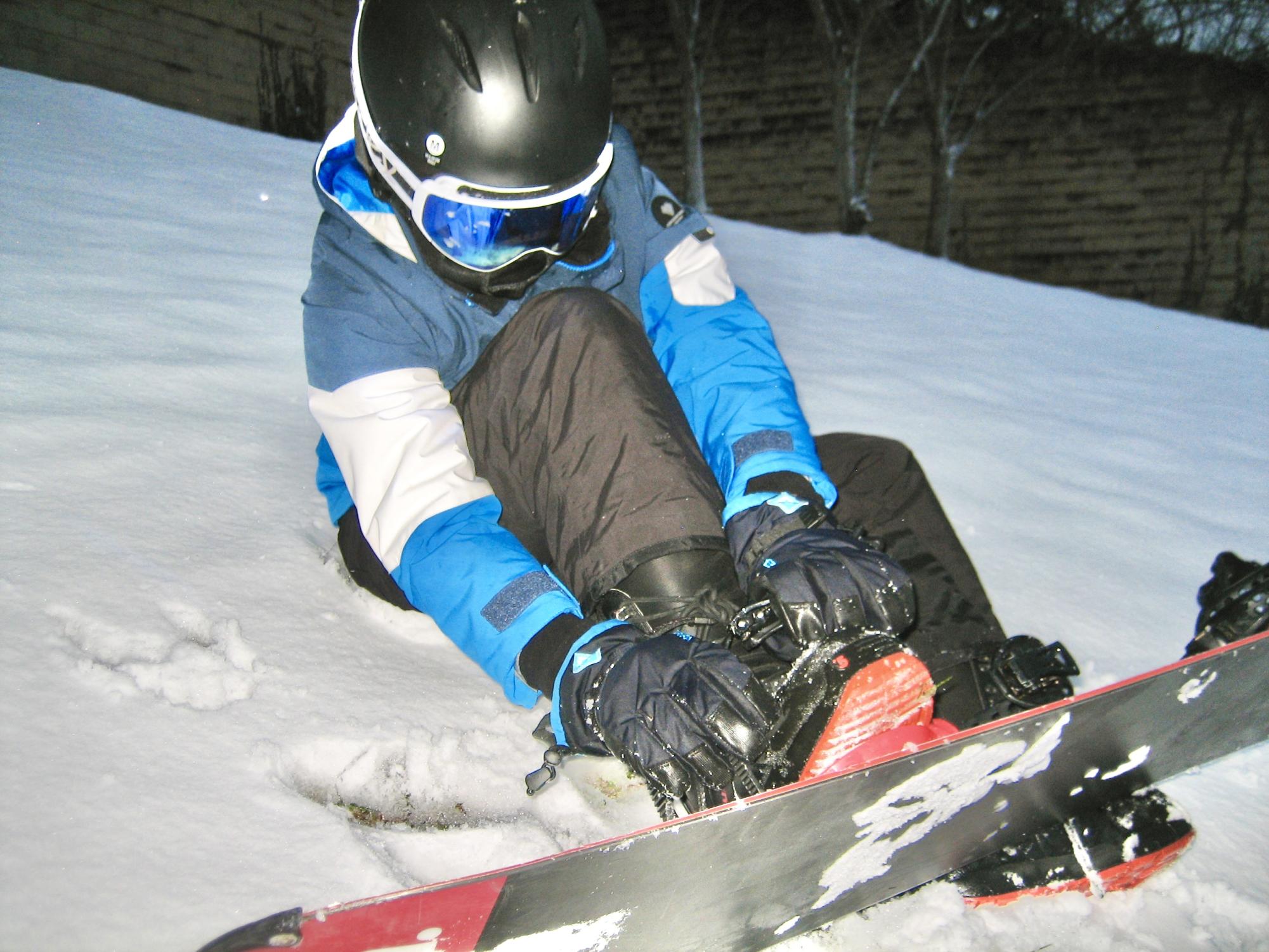
Amster adjusts the lower part of his snowboard boots before attaching them to his snowboard. “My bindings actually fell off today, so being attached to the snowboard well is a pretty important part of controlling it,” he said.
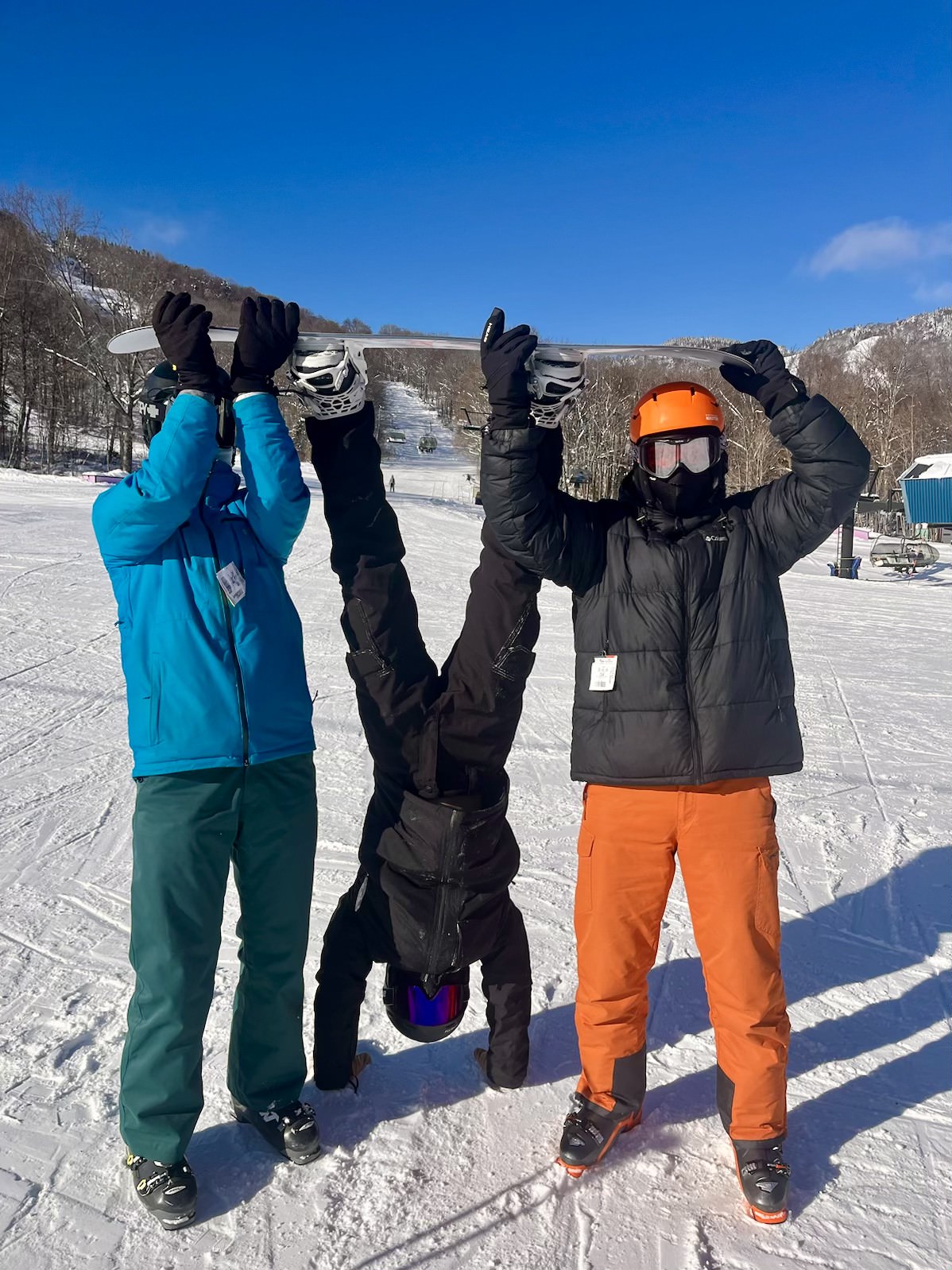
Seniors Adam Yachin (left), Leah Bulson (middle) and Aitan Yachin (right) pose for the camera while on the senior ski trip in Canada. “I think a lot of people know about skiing for sure, but the whole process of learning to ski and then going to the resort and buying passes is very timely and expensive. That’s probably the main reason people don’t ski because otherwise it’s so fun,” Adam Yachin said. “I think a ski club would be very beneficial since a big issue is transportation to resorts, so that being covered would be great. I also think it would help bring more attention to skiing and snowboarding from people who haven’t ever done it before,” he said.
Sophomore Lucia Ewig, a professional skier, poses for the camera before traversing the slopes. “Moments like these, where I’m not racing and just free, skiing, makes me feel in control. I choose a line and carve it through, and it feels like flying,” Ewig said. She has been skiing since she was three years old.
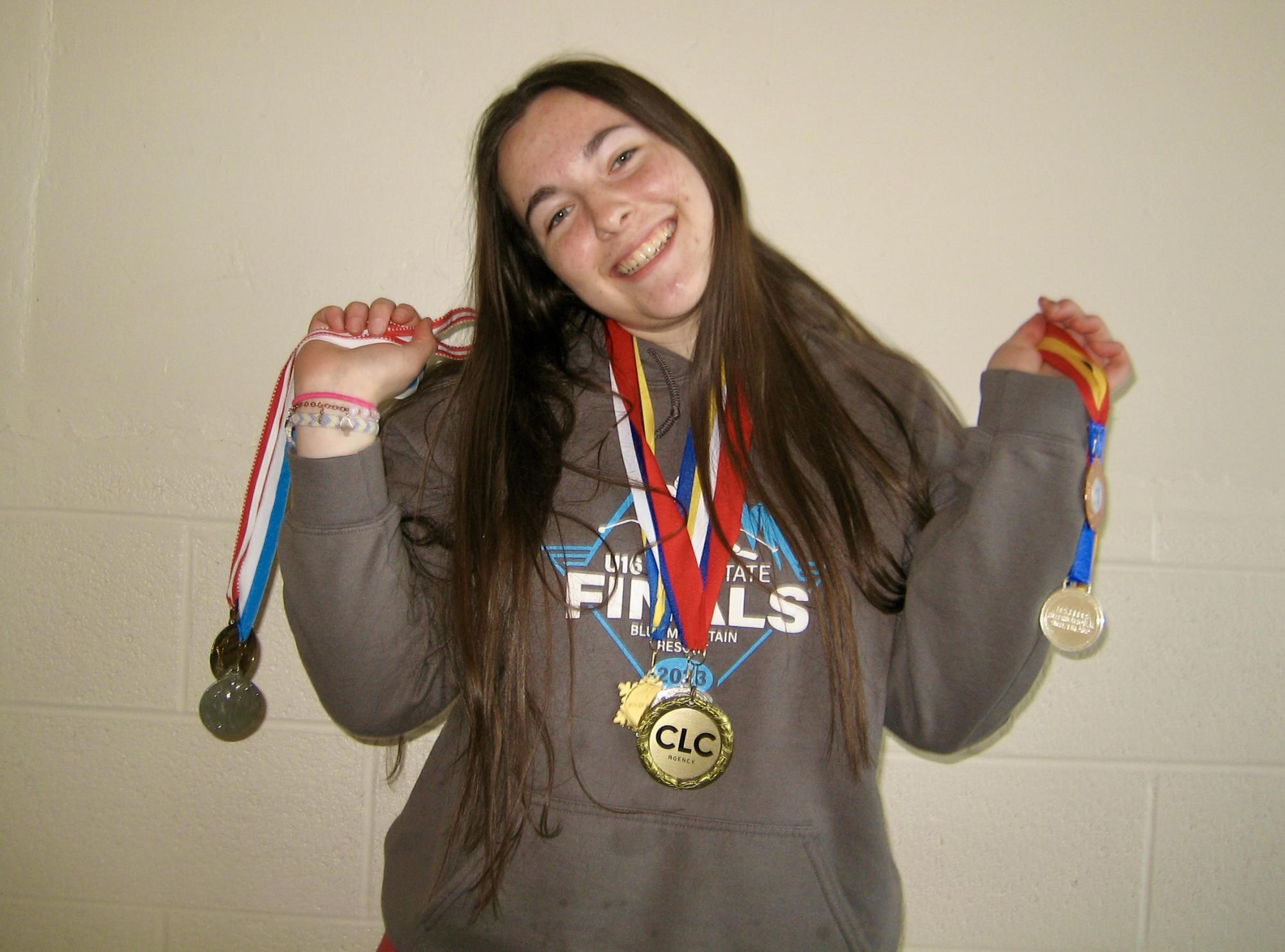
Ewig poses with her many medals won from ski races and competitions. “With any sport you play competitively comes a love-hate relationship. There are going to be days where you don’t want to go to practice sometimes, and it can come with a lot of pressure sometimes too, but when you are able to win an event you feel really proud of all the work you put in,” she said.
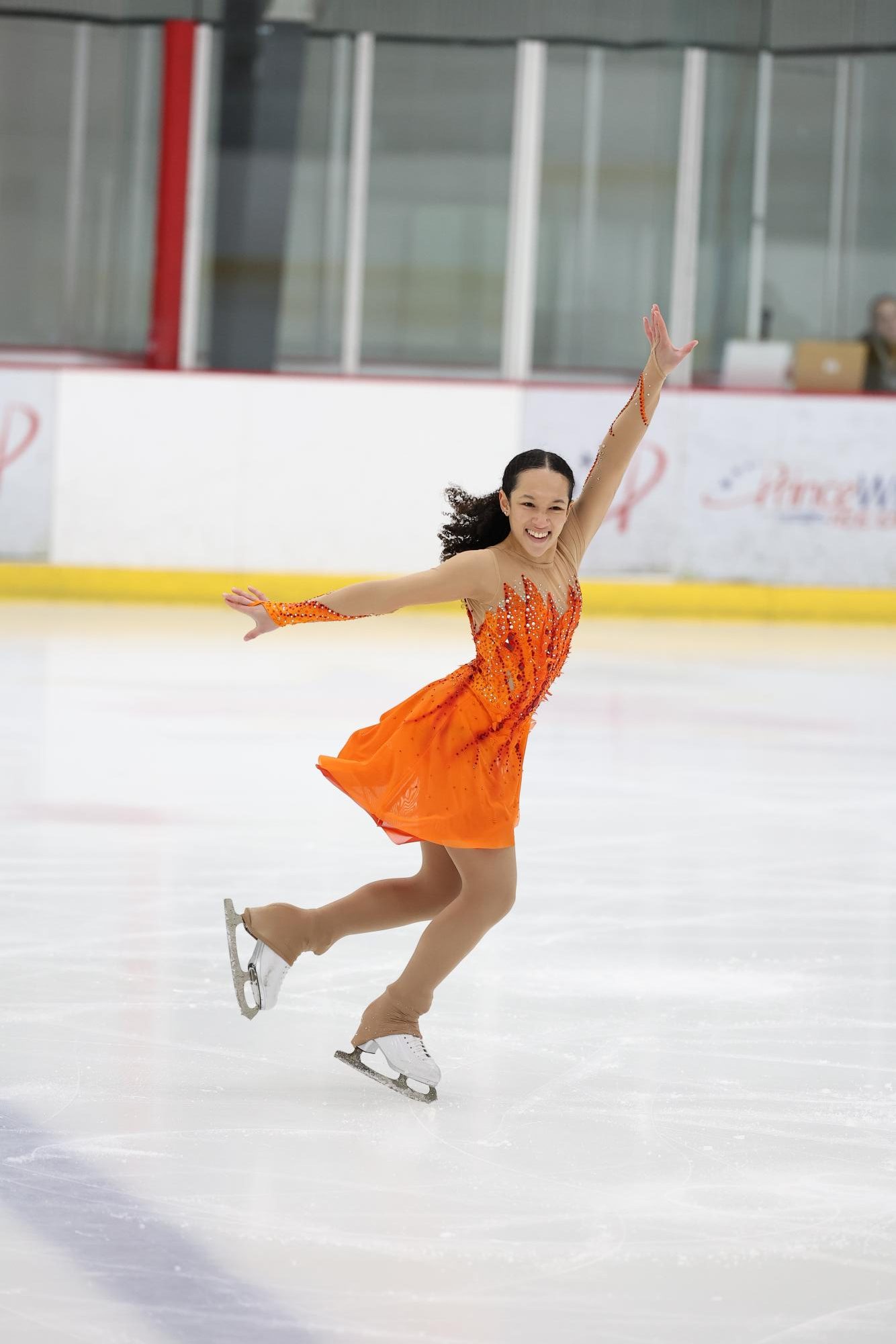
At the end of the day, my own participation in my sport is what inspired this story. As a sophomore at RM now, I’ve been competitively figure skating for 12 years, so I can definitely attest to some of the other athletes’ experiences in their “hidden” sports. My favorite part of my sport is just being able to go out and perform for others to bring a smile to their faces. Expressing to an audience what I feel on the ice when I hear a piece of music – joy, sorrow, excitement – is unparalleled.
Your donation will support the student journalists of The Tide, Richard Montgomery High School's student newspaper. Your contribution will allow us to purchase equipment and cover our annual website hosting costs.


